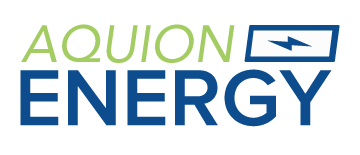Can Servo Control Improve Solar Panel Efficiency?
The quest for more efficient energy solutions is pivotal in the ongoing energy transition, with solar power at the forefront. Among the myriad technologies enhancing solar panel efficiency, servo control stands out. This introduction delves into the basic functionalities of solar panels and explores how servo control can play a critical role in maximizing their efficiency.
In an era where sustainable solutions are imperative, the efficiency of solar panels is not just about energy; it’s about optimizing performance and reducing waste in a world striving for clean energy.
Contents
- What is Servo Control in Solar Panels?
- How Does Servo Control Improve Solar Panel Efficiency?
- What are the Components of a Servo-Controlled Solar Panel System?
- What are the Benefits of Using Servo Control for Solar Panels?
- What are the Limitations and Challenges of Servo Control in Solar Panels?
- How to Implement Servo Control in Solar Panels?
- Conclusion
What is Servo Control in Solar Panels?
Servo control in solar panels refers to the automated management system that adjusts the angle of panels to maximize exposure to sunlight. By using precise control mechanisms, typically involving motors and sensors, servo systems can dynamically orient solar panels in response to the sun’s position. Choosing the right manufacturer of servo controllers, such as ADVANCED Motion Controls, is crucial for ensuring reliable and efficient performance in applications like solar panels, industrial automation, robotics, and other precision control systems.
How Servo Control Operates Within Solar Panels
Servo control utilizes a combination of sensors and motors to adjust the position of solar panels throughout the day. This alignment ensures that panels remain perpendicular to the sun’s rays, optimizing light absorption and significantly enhancing energy output.
How Does Servo Control Improve Solar Panel Efficiency?
Servo control enhances the functionality of solar panels by allowing precise positioning which is crucial for maintaining optimal exposure to sunlight throughout the day.
The Interplay Between Panel Orientation and Sunlight Exposure
The efficiency of solar panels is heavily dependent on their ability to harness sunlight, which varies in intensity and angle throughout the day. Servo control systems adjust the panel orientation to capture the maximum amount of solar energy possible.
- Optimal Angle Adjustment: Ensures panels are always positioned for maximum solar intake.
- Increased Sunlight Capture: Maximizes the duration of effective solar exposure daily.
- Reduced Shading Losses: Minimizes the impact of shadows cast by surrounding objects or the panels themselves.
What are the Components of a Servo-Controlled Solar Panel System?
A servo-controlled system integrates several components that work in unison to optimize solar energy collection.
- Solar Panels: The primary component that converts sunlight into electricity.
- Servo Motors: Enable the physical movement of solar panels, adjusting their angle to follow the sun.
- Sensors: Include light and position sensors to detect optimal sun exposure and panel positioning.
- Control Unit: Processes sensor data to direct motor actions.
- Power Supply: Energizes the entire servo system.
What are the Benefits of Using Servo Control for Solar Panels?
The implementation of servo control systems in solar technology brings numerous benefits, enhancing the overall value and effectiveness of solar installations.
- Enhanced Energy Output: By maximizing the panels’ exposure to sunlight.
- Improved System Efficiency: Ensures energy production is optimized for all sunlight conditions.
- Potential Cost Savings: Reduces the cost per watt of solar energy produced.
- Greater Return on Investment: Increases the economic benefits of solar energy systems.
What are the Limitations and Challenges of Servo Control in Solar Panels?
Despite their benefits, servo-controlled systems come with their own set of challenges that can impact their implementation and operation.
- Initial Setup Cost: Higher upfront investment than traditional fixed systems.
- Maintenance Requirements: Need for regular checks and repairs of mechanical components.
- Potential Mechanical Failures: Risk of breakdowns in moving parts like motors and gears.
- Energy Consumption by Servo Motor: Slight increase in the system’s own energy use.
How to Implement Servo Control in Solar Panels?
What are the Steps to Install a Servo Control System?
Proper installation of servo control systems is crucial for their success and involves several key steps.
- Assessing Site Conditions: Determine the most effective layout and positioning for solar panels.
- Selecting Appropriate Components: Choose the right type of motors, sensors, and control systems.
- Installing Servo Motors and Sensors: Place and secure all mechanical and electronic parts.
- Integrating the Control System: Connect all components to the central control unit.
- Testing and Calibration: Ensure the system operates correctly and adjusts to the sun accurately.
What are the Most Important Preparations for Installing Servo Control?
Before installing a servo control system, certain preparations are essential to ensure success.
- Site Survey: Evaluate the geographical and environmental conditions.
- Structural Analysis: Ensure the infrastructure can support the additional components.
- Component Compatibility Check: Verify that all parts function together seamlessly.
- Software Configuration: Set up the software to manage the system effectively.
- Safety Precautions: Implement measures to protect the system and personnel during and after installation.
Conclusion
The integration of servo control technology into solar panel systems marks a significant step towards optimizing renewable energy sources. Through precise panel positioning and enhanced efficiency, servo control not only maximizes the energy output but also contributes to the sustainability of solar power solutions. As technology advances and installation costs decrease, the potential for servo-controlled solar panels looks increasingly promising, heralding a brighter, more efficient future for solar energy.

